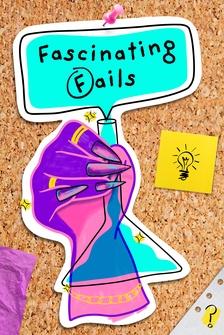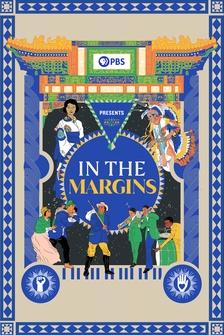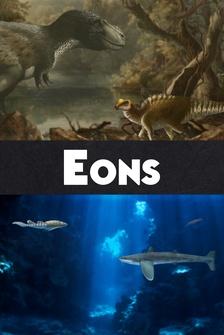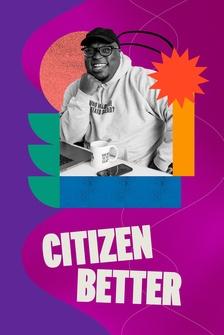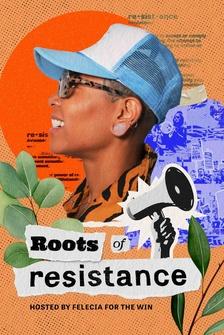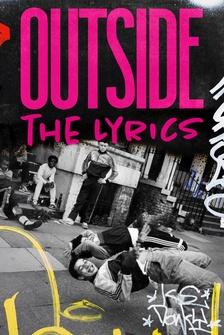Have you ever heard of the Haskell Indian Nations University?
Mind you, according to Western standards, it's one of the lowest ranked universities in the United States.
And as of 2024, it's one of a small number of schools still operating from the Indian boarding school system.
It was a school founded as a means to “kill the Indian, save the man” or in Canada, “Get rid of the Indian problem”.
And as a fun little fact, their school mascot is the Fighting Indian.
But what if I told you that this school is a place where Native identity actually flourishes?
It provides Indian students with an education that emphasizes Indigenous communities.
Courses are designed to help modern students feel comfortable and welcomed in an academic institution.
Because the history of Indians in school is, well, not great.
But what is that history?
What makes high school so special?
And why are they not canceled for their Indian mascot?
Well, let's go back to school.
This is A People’s History of Native America.
With me, Tai Leclaire.
Okay, class.
Today's lesson is about school.
First question.
Why do we go to school?
To give our parents a break?
Or is it to become a good little capitalist?
It all depends on how do we define education.
As we learned in our last episode, Native people didn't put their kids in a room and teach them subjects like science, mathematics, or even speech and debate.
No, they simply lived according to their values and taught by example.
But when European-Americans arrived on this continent, they brought their own set of values with them, and those values collided with the values of many tribes.
And from the beginning, European Americans And from the beginning, European Americans never truly wanted to educate Native people.
They wanted to assimilate them.
And they did this by kidnaping the kids and forcing them to attend these boarding schools.
Because in the eyes of many settlers, Native Americans were far better off embracing white society.
And once they do that, they will be true Americans.
This mentality, together with the Myth of the Vanishing Indian, allowed for the brutality settlers would inflict on the Native population.
But it also solidified Native Americans at least in the mainstream discourse, to be extinct.
So the history, language, culture, including artifacts and relics, do not belong to tribes, but to the colonizer.
As the United States expanded its territory, the stronger the myth became.
This is a reflection of our education system.
Many textbooks are whitewashed with a Eurocentric story of America.
History museums display bones, jewelry and other tribal property behind locked glass, solidifying Native culture as ancient history.
And our sports teams, professional and amateur, use Indian faces as mascots.
A cruel reminder we don't have a say in our representation.
But mascots, Indian education and the Myth of the Vanishing Indian can be seen in the history of Indian boarding schools.
In 1819, Congress passed the Civilization Fund Act, also known as the Indian Civilization Act, and federal and religious boarding schools popped up across the country.
The boarding school policy lasted well into the late 1970s, but the trauma that they cause with the Native communities is immeasurable to this day.
This brings us back to Haskell, which has a gravesite on campus because so many kids died at their schools.
Some were lucky enough to be buried.
Others were just discarded.
Very few were sent home for traditional burials.
Some children died in the buildings because of the lack of sufficient infrastructure.
In 2022, the Department of Interior estimated that over 500 children died at 19 different Indian boarding schools, meaning there must be many, many more that are yet to be discovered.
They also found that those who survived are more likely to have cancer, tuberculosis, high cholesterol, diabetes, anemia, arthritis and gallbladder disease than non attendees.
I wanted to meet someone who actually attended one of these boarding schools and lived to tell about her experience.
Dr. Ramona Klein has been outspoken about her experience.
She's testified before Congress.
She's been in the media.
People magazine, NPR and some big time newspapers.
Hi, Ramona.
Hi Tai.
Thank you for joining us today from North Dakota.
Professor.
Can you share with us a little bit about your experience at the Fort Totten Indian boarding school in North Dakota?
I was seven years old when I went to the school and ten years old when I left.
Almost 11.
What was happening was not only dehumanizing us, but taking our culture away, because not only did they take our culture, they took our hair, they took our language.
They abused us emotionally, sexually, physically and spiritually.
I don't know my language.
I know a few words, but I don't know my language.
I don't know ceremonies.
All of that was taken.
I don't think that people realize how recent this history is.
Can you tell us how it affects the community today?
When you look at that generational trauma from one generation to the other and the parenting skills that were not there because we didn't have parents, we had matrons who beat us.
The question is, where does one get those skills?
Most people get their parenting skills from their parents.
But if you don't have that, all of those are losses.
And it quickly became normalized to send your kids off to these horrible boarding schools that were underfunded and overcrowded.
Parents didn't have a choice that their children were forcibly taken from their homes and they often tried to return home.
When you share your experience with people, what are some of the common misconceptions?
When I would mention that I went to boarding school, ironically.
People thought we were very rich because rich people go to boarding schools and they did not know about that practice.
And unlike the boarding schools where the rich sent their kids, these Indian boarding schools only taught the boys a trade so they can get manual labor jobs.
The girls were taught domestic science so they could work in the homes of rich European-Americans.
As an educator, I found that people, teachers did not know about boarding schools, and at the beginning I used to get upset.
I’d say “how could you not know?
Because this happened over 100 years of time.
How could you not know?” We were shamed for who we were and who we are.
We were dirty Indians.
And not only were we dirty Indians, we were dumb and made to believe that we could not learn.
If I experienced that and I'm shamed for who I am, my children certainly are going to feel that.
Although Dr. Klein went to Fort Totten Indian boarding school in North Dakota, Haskell Indian Nations University continues to operate and serve only the American Indian population.
However, students still carry the historical trauma of their ancestors.
Biologically, even.
Look up epigenetics after this video.
So educating Native Americans in the eyes of the settlers means assimilating by force.
But what about the university studying us?
According to a 2023 ProPublica investigation, over 108,000 remains and 765,000 artifacts are being held by museums, universities and federal agencies across the country.
But in November of 1990, Congress passed the Native American Graves Protection and Repatriation Act, known as NAGPRA.
It was supposed to end the dehumanizing robbery, desecration and general exploitation of Native American burial sites and human remains by museums and federal agencies.
And those institutions were charged with making inventories of all sacred things they had and returning them to the tribes.
To be fair, various universities and museums are doing their part to abide by NAGPRA.
But there are still many institutions in possession of remains with similarly no intent of letting go based on their lack of cooperation with the federal law.
But in 2024, new federal regulations are giving museums and schools only five years to repatriate these items back to tribes, forcing the Field Museum in Chicago, the American Museum of Natural History in New York, as well as many others, cover up Native American exhibits.
So Native American students today are living through the trauma their parents endured from boarding schools.
Meanwhile, they still have to see dead or stereotyped Indians in museums, schools and sports teams.
But what does all of this have to do with Haskell?
The school may not be ranked highly by Western standards, but there's no denying that Haskell embraces and celebrates Native American heritages like few other schools.
American Indian and Alaska Native cultures integrated into all of the university's curricula.
Students from over 100 federally recognized tribes come to school and bring with them their culture, language and traditions.
Haskell evolved from a place where Native cultures were supposed to be killed to a place where Native Americans are able to embrace and honor their cultures.
And even though their mascot is the Fighting Indian, the students represent their mascot in a respectful way because they don't fight like Indians.
They are literally fighting Indians.
So you won't see them wearing face paint or fake headdresses or doing the dreaded tomahawk chop.
They don't do this because no tribe does this.
Dr. Klein, what do you think?
We are not viewed as contemporary people living today.
So how do we change that?
We need to hold on to establishing relationships.
We need to hold on to who we are as Indigenous people.
Learn our culture if we don't know it, because that was taken from us and we need to continue to laugh.
We need to continue to laugh a lot.
Thank you so much for your time, Ramona.
You're welcome.
You're welcome.
A study conducted in 2012 by Penn State shows that 27 states did not include an individual Native American in their history curriculum.
More astonishing is that 87% of state level educational institutions failed to mention Native people after the year 1900.
But at Haskell Native Americans are making themselves known.
Even though Western society may rank it on the lower end of the US education system.
It's one of the best schools that is grounded in American Indian cultures.
Thanks for watching.





